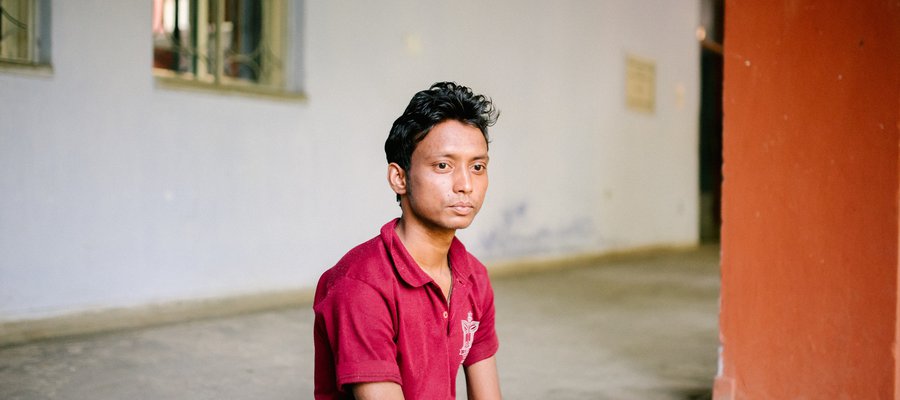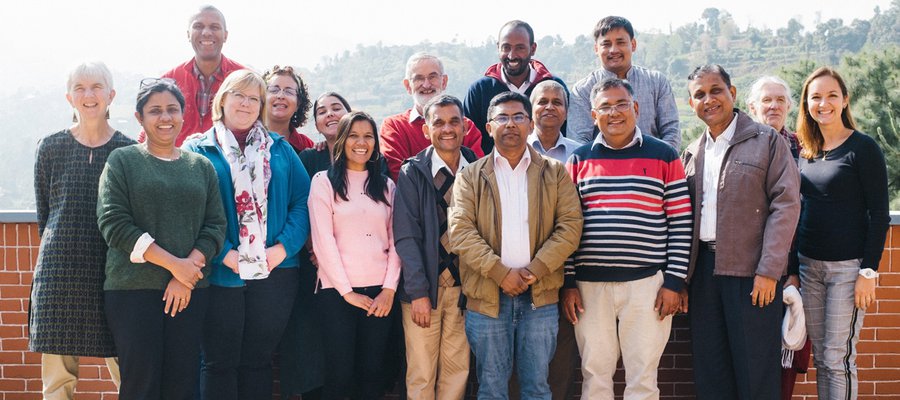ENLIST: Finding new ways to tackle ENL

The problem to be addressed
If leprosy is not treated quickly, the bacteria in the body are allowed to build up so high that even after antibiotic treatment, residues can remain for years. These residues increase the risk that a patient will experience an inflammatory episode, called a leprosy reaction. These leprosy reactions are the main cause of nerve damage and disability development.
There are two types of leprosy reaction: Type 1 Reaction causes inflammation only where the leprosy bacteria are located. Type 2 Reaction (ENL - Erythema Nodosum Leprosum) can affect the whole body and causes much worse symptoms for a much longer time.
When ENL develops, the whole body develops symptoms. Patients have a fever and incredibly inflamed skin legions all over their body. They can experience severe pain in their skin, bones, muscles, eyes and/or testicles.
The problem with existing solutions
The existing treatments for ENL are not up to the right standard. The two treatments that are currently used are prednisolone and thalidomide. Using these treatments, approximately three quarters of patients become chronic and require more than six months of treatment and half of ENL patients require up to 18 months of treatment to stop having their first reaction. The extended nature of this treatment is also causing devastating disruptions in patients' lives. Long stays in hospital are not good for sustaining livelihoods, households, and families.
As well as being slow to stop reactions, prednisolone and thalidomide have problematic side effects. Thalidomide has an infamous history associated with risks for serious birth defects. It is often restricted or banned entirely across leprosy-affected countries. Prednisolone is available worldwide and is the most common treatment for ENL. However, as a corticosteroid, it is not meant to be used long-term. This long-term use can lead to serious side effects, such as blindness, diabetes, and joint and bone problems. A study in Ethiopia even showed that long-term use can lead to patients dying.

We have to find better treatments for ENL to stop severe side effects, deaths, and to prevent family incomes from spiralling.
Dr Deanna Hagge, TLM Senior Research Advisor
Who is involved in ENLIST?
ENLIST is a group of specialists that have been brought together from across the world to work together in partnership to find new solutions to the problem of ENL. Working in partnership is very important because it's almost impossible for any one site to perform a large, comprehensive study of ENL.
The following people are involved in the ENLIST consortium.
London School of Hygiene and Tropical Medicine - Stephen L. Walker, Diana N. J. Lockwood, Anna M. Sales, Armi Maghanoy, Vivek V. Pai, Marivic Balagon, Shimelis N. Doni, José A. C. Nery, Peter G. Nicholls, Nanda Ajayan, Medhi Alinda, Sylvia Anggraeni, M. Yulianto Listiawan, Milton Moraes, Lilian Pinheiro Rodrigues Nogueira and Euzenir Sarno.
TLM Trust India - Joydeepa Darlong, Annamma John,
TLM Bangladesh - C. Ruth Butlin, Benjamin Jewel Rozario, Biliom A. Sangma, Shamsun Naher, Virginia Sukla Biswas, Kiron S. Chokroborty, Kalpona Roy and Rehana Begum.
TLM Nepal - Mycobacterial Research Laboratories: Deanna A. Hagge, Mahesh Shah, Kapil D. Neupane, Suwash Baral, Pawan Parajuli, Ruby Thapa, Divya RSJB Rana, Preeti Maharjan and Jeni Maharjan.
Ethiopia - Saba M. Lambert, Digafe T. Alembo, Abeba M. Yetaye, Belaynesh A. Hassan, Mohammed B. Shelemo,Yilma Tesfay.
How the ENLIST Consortium is making a difference
Already, the ENLIST project has used Leprosy Research Initiative funding to develop an ENL Severity Scale to grade 10 major symptoms of ENL. This provides a global tool that can be used to measure and compare ENL patients to each other so that we can understand how symptoms change with new treatments.
The ENLIST team are now conducting a trial which will see them combine prednisolone treatment with another drug called methotrexate. The hope is that, by using the two together, they can slowly wean a patient off prednisolone before it has a chance to cause long-term damage. The team are also in the early stages of looking at whether an entirely new drug (so new that it doesn't yet have a name) could be used to treat ENL. The early results are hugely promising and suggest we may one day be able to treat ENL with perhaps only a month of drug treatment with no major side effects.
The ENLIST team will continue to work on these projects with the hope that ENL will one day be treated much quicker and much less painfully that it is currently treated.
ENLIST Consortium publications to date
Household Costs of Leprosy Reactions (ENL) in Rural India
"In this study, we show that having a family member affected by ENL places considerable financial burden on households in rural India... Leprosy affects poor and marginalised communities in low- and middle-income countries across the world; households affected by ENL are at risk of being pushed further into poverty. The findings of this study support the need to better understand ENL and develop improved strategies for the prevention and management of ENL."
Read moreA leprosy clinical severity scale for erythema nodosum leprosum
" In order to assess the efficacy of different treatments for ENL it is important to be able to compare individuals before and after treatment. This is difficult to do in a complex, multi-system disorder such as ENL. To overcome this problem we have developed a scale, which is easy to use, to measure the severity of ENL. In this article, we describe the validation of this scale, which ensures that it is a useful measure of ENL severity."
Read moreAn International Multi-centre Cross-sectional Study of the Clinical Features of Erythema Nodosum Leprosum
"Other effective drugs need to be identified to reduce the burden of this condition. In order to establish which treatments will be effective in ENL it is necessary to have a clear picture of the clinical features of the disease and how these influence severity. This is the first systematic study of ENL to define these and will help in developing tools to facilitate treatment studies of this severe, debilitating complication of leprosy."
Read more